
Peace lilies (Spathiphyllum spp. and cvs., Zones 11–12) are evergreen perennials native to much of Central America and Southeast Asia. But their glossy leaves and tan, spiky flowers surrounded by white bracts have made them popular houseplants around the globe. Luckily, they are resilient and not too demanding. However, if you want to make your peace lily thrive and bloom, you should strive to meet all of its requirements. Providing your plant with what it needs will reward you with mesmerizing flowers and lush foliage.
Getting the lighting right is one of the most important aspects of peace lily care. While they can handle low light, these houseplants thrive with bright, indirect light. They can also tolerate up to two hours of direct sunlight per day. Also, be sure to water your plant once the top few inches of soil dries out. Droopy leaves are a sign of thirst, but if your plant’s leaves are wilting a day after watering, this could be a sign of overwatering. In this case, wait until your plant is completely dried out before watering again.
While peace lilies do fine in normal home temperatures, their ideal range is 75°F to 85°F, so the warmest spot in your home is a good place for them. Although they come from tropical climates, peace lilies tolerate low temperatures better than some other tropical plants. But if the mercury dips below 50°F, their growth will slow; a temperature below 45°F could be deadly.
Learn more
More on houseplants and indoor gardening
Can all houseplants go outside in summer?
Well-draining, rich soil is key
Make sure the potting soil you provide is porous, well-draining, and nutrient-rich. If you want to improve soil aeration, you can use a store-bought potting mix and enrich it with large particle amendments, such as perlite or orchid bark. A good mix is three parts commercial mix, one part perlite, and one part bark. A mix like this will reduce the risk of root rot from overwatering.
If you repot your peace lily annually, you don’t have to fertilize it, since the fresh soil will provide the plant with nutrients. If you do want to fertilize your plant, always do so when it’s actively growing; otherwise the nutrients will sit in the soil and the plant will not be able to absorb them. This nutrient accumulation can damage your plant and its root system. You can fertilize your peace lily using any fertilizer with a nitrogen/phosphorous/potassium (NPK) ratio of 3:1:2; just make sure to read the instructions on the package to avoid overfertilizing.
Avoid these common pests and diseases
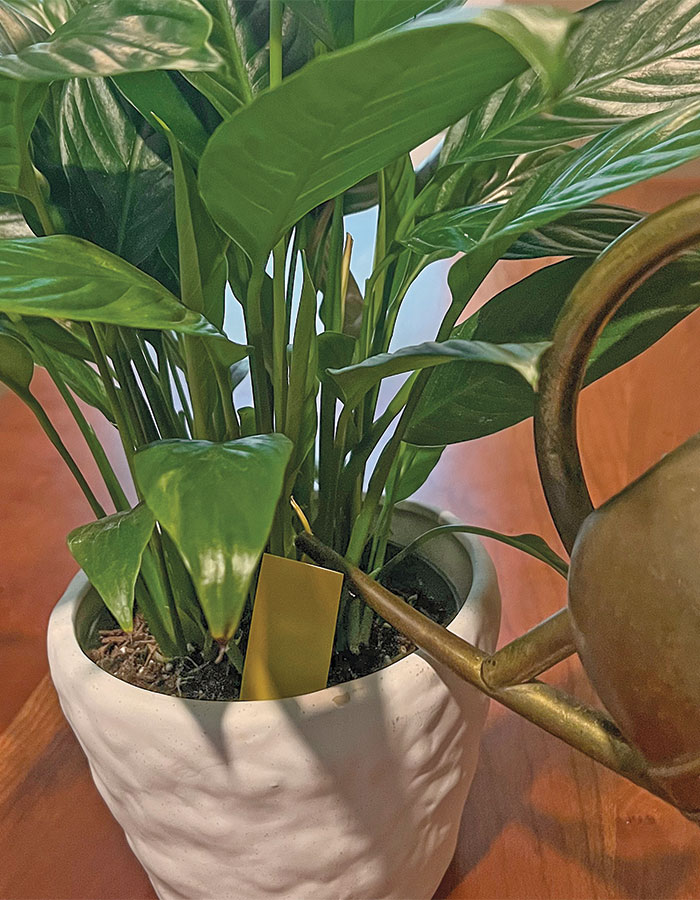
Some of the pests that affect peace lilies are aphids, mealybugs, and fungus gnats. In cases of a minor infestation, you can remove aphids and mealybugs with a strong jet of water. You can also wipe down the leaves. If that doesn’t work, spray the plant thoroughly with insecticidal soap, horticultural oil, or neem oil.
To get rid of fungus gnats, use an organic microbial larvicide such as Mosquito Bits in combination with yellow sticky traps. Follow the instructions on preparation, and water your plants with the larvicide solution for a minimum of two weeks. This will kill the larvae in the soil, while the traps will catch the adults.
Two diseases peace lilies might suffer from are cylindrocladium root rot and aerial blight. Yellowing of the lower leaves is one of the first symptoms of cylindrocladium root rot. Lower parts of petioles and the roots will then start to rot. Aerial blight symptoms include large brown dead spots on leaf margins and centers. Plants with these diseases must be discarded. However, don’t panic if you start to notice yellow or brown spots on your plant; nine times out of 10 this is an indication of a cultural problem, not a disease.
If you’ve met all their basic needs, you will find that peace lilies aren’t too fussy. Just care for them properly and enjoy their beauty for years to come.
Three spectacular varieties
While there are many peace lily cultivars, the following are known for being out-of-the-ordinary stunners that would be instant focal points in your home.
‘Sensation’ is a well-named colossus
(S. ‘Sensation’)
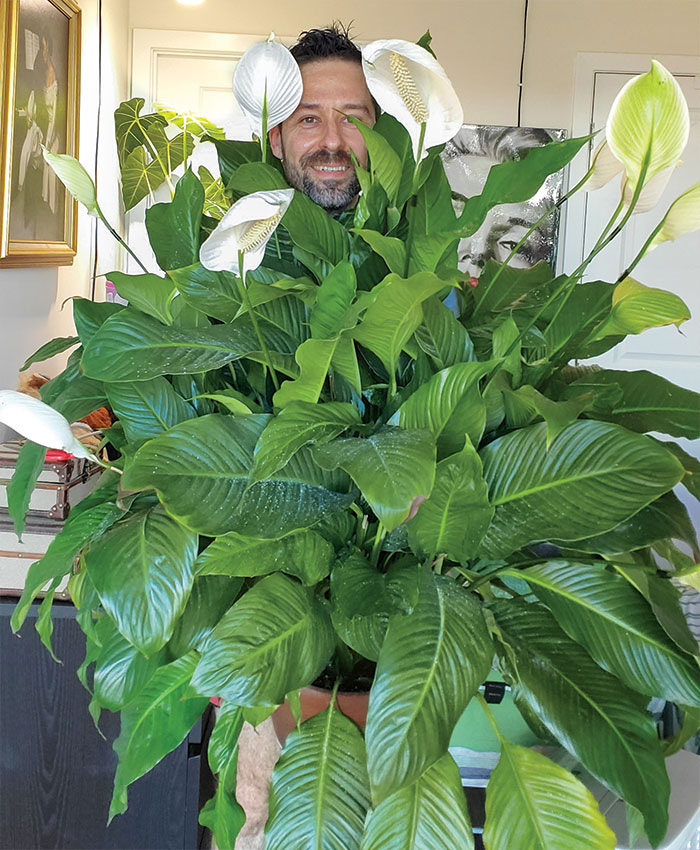
This giant variety has massive leaves. It can grow as tall as 6 feet and up to 4 feet wide. Its dark green foliage is glossy with a deeply ribbed pattern. Due to its lush greenery, ’Sensation’ can enrich any space with a tropical jungle vibe.
‘Silver Streak’ is a diminutive cutie
(S. ‘Silver Streak’ syn. ‘White Stripe’ syn. ‘White Lightning’)
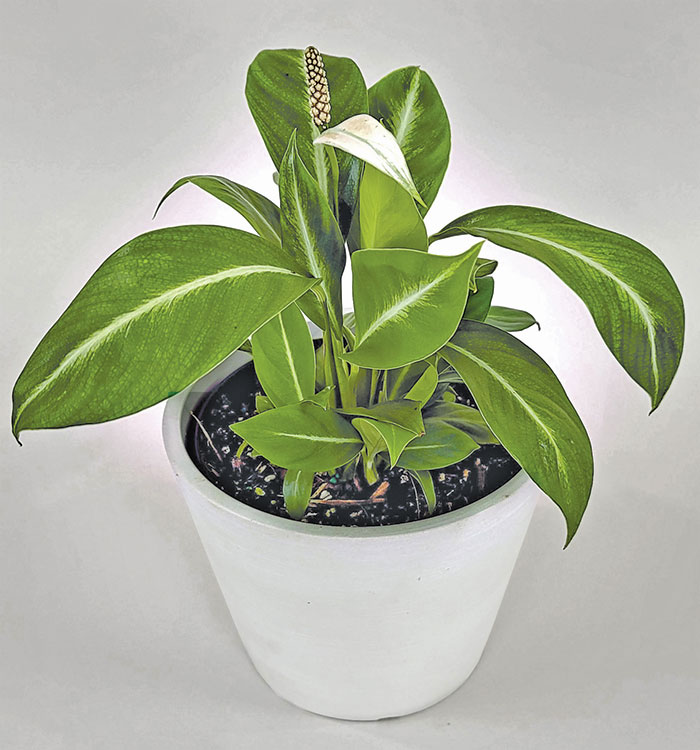
‘Silver Streak’ is a compact variety that grows only 10 to 15 inches tall and 5 to 10 inches wide. It boasts a matte finish to its leaves, which have a distinctive white stripe along their centers. This gives ‘Silver Streak’ a unique flair.
‘Picasso’ is the best variegated option
(S. ‘Picasso’)
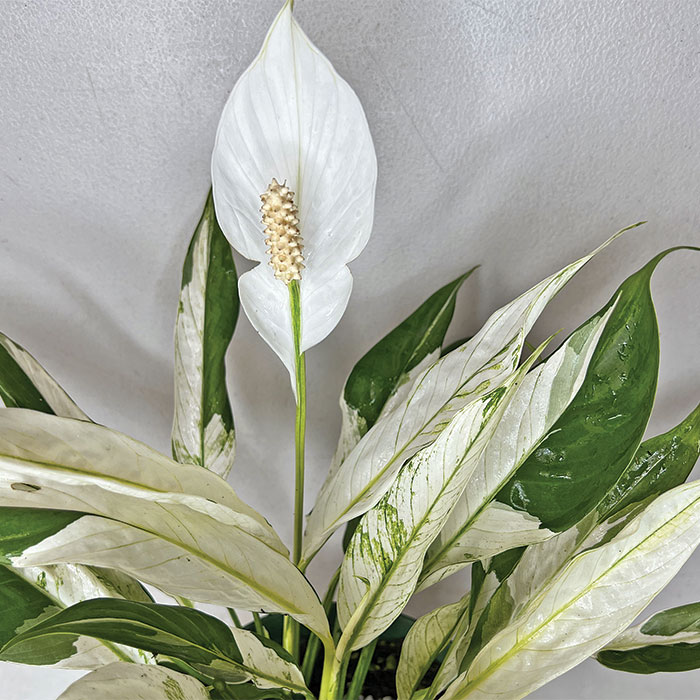
The rare variety ’Picasso’ is extremely variegated, with big white and lightgreen splotches on its leaves. Like other variegated peace lilies, this beauty needs more light than its nonvariegated counterparts. More indirect light should produce more variegation. ’Picasso’ grows 15 to 20 inches tall and wide.
How do I get my peace lily to bloom?
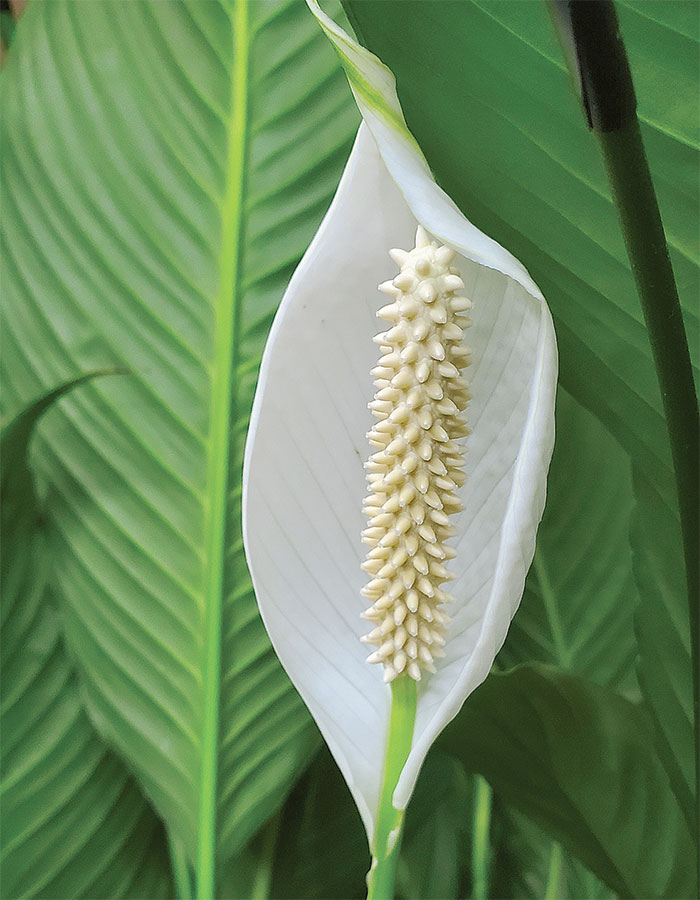
There are a few reasons why your plant might not be blooming. First, peace lilies need to mature before they start to flower, and many need to be up to 15 months old before they start blooming naturally. Even though it may seem like it, the plant you buy may not be mature enough to flower. Nurseries often use gibberellic acid to prompt young peace lilies into producing flowers before they normally would.
Once the plant is old enough, it will need a lot of light to prompt blossoming. While peace lilies can survive with lower light, they will not flower in those conditions. Giving your plant high levels of indirect light and up to two hours of weak direct sunlight a day (such as morning or late afternoon light) can help prompt flowering.
Besides light, it’s essential to provide optimal growing conditions and proper care. Ensure that your plant has everything it needs, and it will start to bloom. How often peace lilies bloom depends on the variety. Some are nearly everblooming, while others might bloom once or twice a year. Flowers should last for about two months.
Vladan Nikolic is the owner and operator of Mr. Houseplant, a company that offers houseplant consultations and workshops. You can follow his gardening journey on Instagram @nikolicvladan.


















Comments
Log in or create an account to post a comment.
Sign up Log in